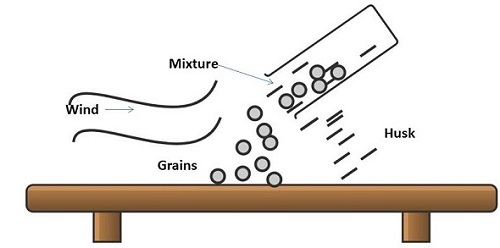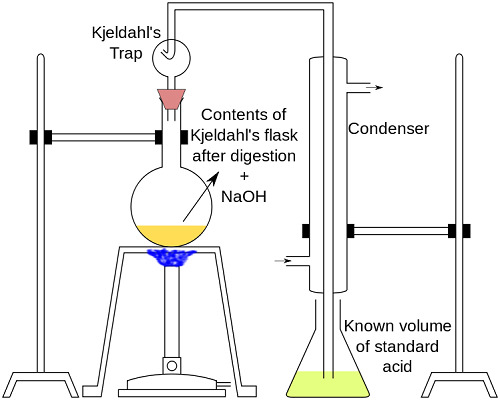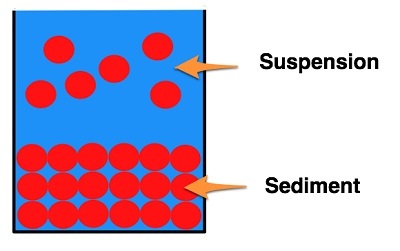
 Data Structure
Data Structure Networking
Networking RDBMS
RDBMS Operating System
Operating System Java
Java MS Excel
MS Excel iOS
iOS HTML
HTML CSS
CSS Android
Android Python
Python C Programming
C Programming C++
C++ C#
C# MongoDB
MongoDB MySQL
MySQL Javascript
Javascript PHP
PHPPhysics
Chemistry
Biology
Mathematics
English
Economics
Psychology
Social Studies
Fashion Studies
Legal Studies
- Selected Reading
- UPSC IAS Exams Notes
- Developer's Best Practices
- Questions and Answers
- Effective Resume Writing
- HR Interview Questions
- Computer Glossary
- Who is Who
Physical Separation Methods
Introduction
Physical separation methods are such methods in which the chemical and physical attributes of elements of any mixture remain the same after separation. Almost all separating methods are useful and widely applied in the current times for different industrial and home purposes. The physical separation method is a supportive and useful method of segregation.
What is physical separation?
Physical separation is associated with differentiating some components based on their structure, gravity, magnetic attributes and some other natures. The optical properties and electrical attributes are also important considerations that are required at the time of separating components in a physical manner. Handpicking, winnowing, threshing, distillation, magnetic separation and evaporation are mostly recognised methods of separating elements from any mixture.
Physical Separation Methods
Some most important and considered physical separation methods are as follows.
Handpicking
The handpicking separation method is one of the simplest methods of physical separation. This method is applied at the time of picking a very small amount of unwanted materials from any grains and large particles. The separated particles may lack purity and therefore can create difficulties in getting a pure mixture. An example of applying handpicking separation method is separating rotten food grains from a sack of wheat grains.
Threshing
At the time of harvesting any particular crop, the threshing method is applied. The harvesting procedure of wheat is performed and followed by the threshing separation method.
Winnowing
Grains are collected from the field and after undertaking the threshing process; all unwanted husks are to be separated. At this stage, the winnowing physical separation method is helpful.

Figure 1: Winnowing method
This separation is performed in an area where the presence of wind is ensured. The grains are thrown from a distance and the winds help in separating all the chaff and husks from grain particles.
Sieving
In some mixtures, components are found to be of different sizes. A sieve is used in separating the larger particles from the smaller ones. At the time of sieving, the smaller particles are passed through the sieve and the large ones remain in the sieve.
Distillation
In a liquid mixture distillation, method is used in separating different types of liquids.

Figure 2: Distillation method
In this separating method, components of the mixture are vaporized and isolated. The evaporation is connected to this. The generated vapour is collected in the jar in a liquid state.
Sedimentation
The sedimentation method of separation is applied in separating a liquid from insoluble solids. As an example, muddy water can be left to rest and after some time, the mud is sediment at the bottom of the jar.

Figure 3: Sedimentation process
All heavier impurities are found to be separated by this method.
Evaporation
A soluble solid and solvent are separated by undertaking the evaporation separation method. All the organic solvents are turned into gas and this process leaves the solid residue left in the jar.
Magnetic Separation
In any mixture, some of the components may be of magnetic properties. A strong magnet is used in separating all magnetic elements such as cobalt, iron, and nickel from the mixture. Metals for any discarded waste can also be separated by the magnetic separation method.
Separating Funnel
The usage of a separating funnel is found mainly for separating more than one immiscible liquid. The nature of the liquids’ density is unequal and this advantage is granted for separating any particular liquid from the mixture. As an example, a mixture of oil and water can be separated by using a separating funnel.
Importance of Physical Separation Methods
All separating methods possess an individual significance in relation to their application to various fields.
In the technological field, new challenges technology can be faced with efficiency by taking the help of the most applicable physical separation method.
Necessary primary elements can be separated from secondary elements by following separation methods.
Reduction of waste is one of the most beneficial aspects of using the separation method with which waste materials are separated from unnecessary ones.
Consumption of pure water is a basic need of living beings and using the purification separation method, and distillation method, this necessity can be fulfilled.
Physical Separation Methods: Application
Some of the most important applications of the physical separation method are as follows.
In a mixture where the components possess different sizes, applying filtration and sieving separation method are very important and helpful.
One may follow the distillation separating method at the time when an impure liquid is to be separated from a liquid mixture.
In some significant industrial purposes, separating magnetic elements from a large amount of fluid and hard substances is done by applying the magnetic separating method.
Identification of radioactive wastes is done by following chemistry related new separation method.
Conclusion
Physical separation methods are often undertaken when it is not necessary to change the chemical and core nature of any element. Each physical separation method possesses an individual technique that is needed to be followed properly for separating the desired elements from a mixture. Any unwanted material is also separated from a necessary mixture without changing its core componential attribute. Most of the unwanted or desired materials are separated from a mixture by following appropriate separating methods.
FAQs
Q1. Which types of mixtures are there those elements can be separated by following separation methods?
Ans. The main two types of mixtures are there namely, homogeneous and heterogeneous. The physical characteristics of these mixture elements are important in this separation method.
Q2. How is the biochemistry field improved by the application of the separation method?
Ans. In the field of biochemistry, the separation of different chemicals is done by applying associated separation methods such as filtration and sedimentation. These two methods are useful for separating biochemistry-related components.
Q3. How is chromatography developed by the application of separated methods?
Ans. An important application of separating methods is found in some theoretical advancement. Chromatography is such an area where the application of a proper separating method is essential.

